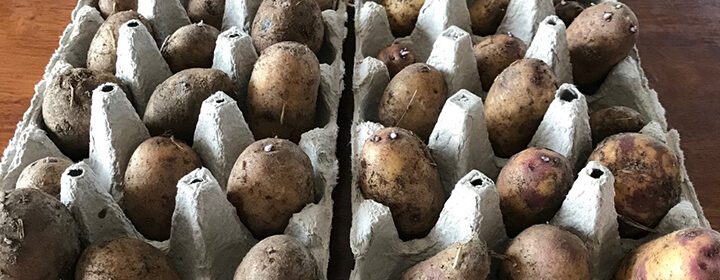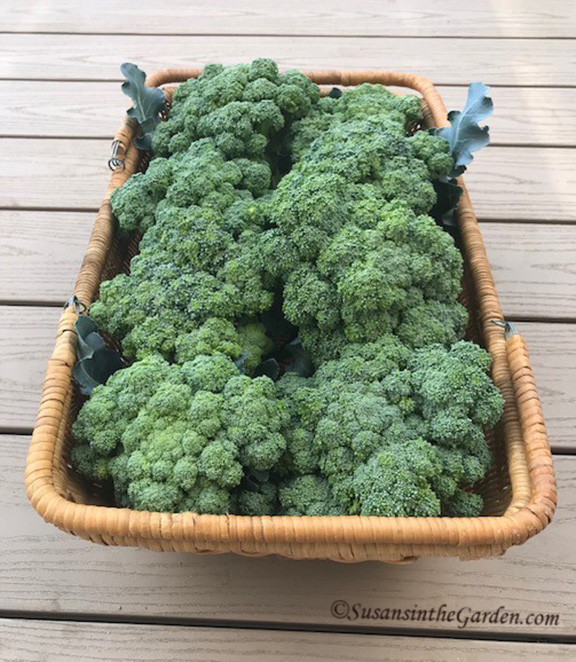Sept. 26 Column: Garden Lessons

What a growing season! This was a tough one here in Spokane, Wash., and it provided plenty of garden lessons for me. I guess that’s the great thing about gardening: you’re always learning new things, right?
That’s the topic for today’s garden column. In it, I discuss the many garden lessons I learned, including ones I thought I’d already learned long ago! (heavy sigh) There’s an important point I want to make. No matter how many years we’ve been gardening, we always learn new things. That is how we become better gardeners. You can read my column underneath the video below.
One thing I’m excited about trying next year is more heat-tolerant vegetable crops. You’ll probably recall that I recently wrote a column on that topic so if you missed it, be sure to read it. I have been writing a bunch of notes about what I want to do differently in 2022. Have you’ve been writing in your garden journal as well? I always think I’ll remember things from one year to the next. Sometimes I do, but more often than not, I will forget. Always put your plans or “aha” moments in writing.
In this week’s video, I take you on tour of my September vegetable garden. Things will look quite different from what you’ve been seeing throughout the summer! You’ll see what I’ve been harvesting. I’ll also share my plans for the remainder of the garden in the coming weeks.
Garden Lessons garden column:
As our garden season winds down, I’m already reflecting upon the lessons I learned this year and how I can build upon them so my 2022 garden will perform much better.
I don’t think anyone could have anticipated this summer’s record-breaking high temperatures but there are a few changes I will make next year. One of them includes applying a thick mulch to the soil surface in every vegetable garden bed and around annual and perennial flowers. Mulch helps the soil retain more moisture. I also want to test some heat-tolerant vegetable varieties.
This year, the heat underscored the fact that I’ve been planting my broccoli seedlings too late in the season, which forces them to produce a crop in midsummer. A few years ago, I read somewhere that one should plant broccoli seedlings in the garden after the danger of frost has passed. I have dutifully followed that advice ever since and now realize that has been a mistake. Next year, I’ll transplant them much earlier and see if the harvest improves.
One of my experiments to get the earliest lettuce crops ever was a roaring success so I intend to repeat that next year. I started the seeds indoors on Jan. 27 and transplanted them into the garden in mid-April, at the time about when I ordinarily would plant lettuce seeds outdoors. I covered the seedlings with a row cloche, which is a heavy-duty, clear plastic tunnel that kept the seedlings warm enough so they wouldn’t get frosted. I began harvesting lettuce for salads much earlier than usual. You don’t need a fancy cloche to achieve the same result: use empty plastic milk jugs with the bottoms removed or suspend a sheet of clear plastic over a few hoops to keep your plants warm.
I also learned that chitting (pre-sprouting) seed potatoes is the way to go. This involves exposing them to indoor light or placing them under a grow light for 2 to 4 few weeks prior to planting them in the garden. By doing this, the plants get off to a great start. When I compared the plants of pre-sprouted potatoes with traditionally-planted seed potatoes, the difference was remarkable.
I’m embarrassed to admit this next revelation but it revolves around growing beets. My usual routine is to plant the seeds relatively thickly, then thin the seedlings to a 4-inch spacing so the roots have enough room to develop. I’ve always tossed the thinned seedlings into our compost pile. This year, after noticing how beautiful those leaves were, I decided to snip them off and steam them to accompany that evening’s meal. I had no idea beet greens were so delicious!
Another of this year’s lessons was about patience, which has never been my strong suit. I learned – once again – that I plant warm-season crops such as tomatoes, peppers, squash and melons too early. It’s easy to argue that mid-May should be a safe time to plant them but invariably we’ll have some cold nights and I have to scramble to cover all of the tender plants to protect them. Next year, I resolve to wait until the end of May. Now that I’ve put this in writing, please hold me to this.
There were more important lessons but you get the idea. As gardeners, it’s important to learn from our mistakes and successes. It’s how we all become better gardeners, year after year.
Susan Mulvihill is author of “The Vegetable Garden Pest Handbook.” She can be reached at Susan@susansinthegarden.com. Watch this week’s “Everyone Can Grow a Garden” video at youtube.com/susansinthegarden.

